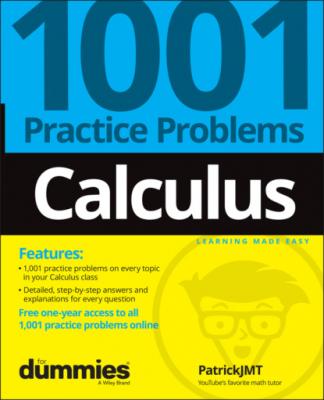Calculus: 1001 Practice Problems For Dummies (+ Free Online Practice). Patrick Jones
Чтение книги онлайн.
Читать онлайн книгу Calculus: 1001 Practice Problems For Dummies (+ Free Online Practice) - Patrick Jones страница 26
 product rule, quotient rule, and chain rule as before. Here are some tips for solving these problems:
product rule, quotient rule, and chain rule as before. Here are some tips for solving these problems:
Using logarithmic differentiation requires being familiar with the properties of logarithms, so make sure you can expand expressions containing logarithms.
If you see an exponent involving something other than just the variable x, you likely need to use the chain rule to find the derivative.
The tangent line and normal line are perpendicular to each other, so the slopes of these lines are opposite reciprocals.
Derivatives Involving Logarithmic Functions
377–385 Find the derivative of the given function.
377.
378.
379.
380.
381.
382.
383.
384.
385.
Logarithmic Differentiation to Find the Derivative
386–389 Use logarithmic differentiation to find the derivative.
386.
387.
388.
389.
Finding Derivatives of Functions Involving Exponential Functions
390–401 Find the derivative of the given function.
390.
391.
392.
393.
394.
395.
396.
397.
398.
399.
400.
401.
Finding Equations of Tangent Lines
402–404 Find the equation of the tangent line at the given value.
402.
403.
404.
Finding Equations of Normal Lines
405–407 Find the equation of the normal line at the indicated point.
405.
406.
407.
Chapter 7
Implicit Differentiation
When you know the techniques of implicit differentiation (this chapter) and logarithmic differentiation (covered in Chapter 6), you’re in a position to find the derivative of just about any function you encounter in a single-variable calculus course. Of course, you’ll still use the power, product, quotient, and chain rules (Chapters 4 and 5)